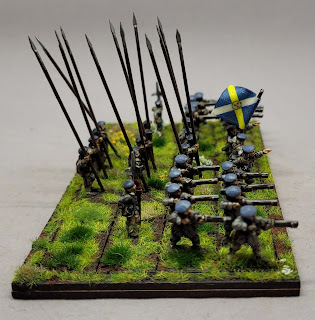Houses of Interest: Berkshire
The #ECWtravelogue finally turns its attention to the County of Berkshire.
Although that isn't strictly true, having visited the County before to visit the battlefields of Newbury 1 and 2, Donnington Castle, and the rather excellent West Berkshire Museum. You can find the entry here.
 |
| Littlecote |
Littlecote House, Hungerford, has appeared in KeepYourPowderDry entries many times before: famous for having the best preserved, intact Civil War armoury in the country. The collection was put up for sale, and thankfully purchased by the Royal Armouries. Unfortunately a small handful of items from the collection made their way onto eBay before the Royal Armouries were able to secure the sale. The House itself is now a resort style hotel, open to residents only I'm afraid. The general public can visit the grounds to explore the Roman Villa on the site.
 |
| Three Swans Hotel |
Hungerford itself played host to the Earl of Essex and Parliament's main field army on the night of 10th June, 1644; the army was passing through en route to the West Country. The Earl of Manchester's Horse were billeted in the town in October 1644. Not wanting to miss out on the town's hospitality the King's army spent the night here in November 1644 en route to Abingdon. Sadly there is nothing in Hungerford commemorating the passage of troops through the town, however The Three Swans Hotel dates from the late C16th so more than likely witnessed the events, and possibly played host to some of them.
 |
| The Ostrich |
The Ostrich Inn in Colnbrook reputedly played host to Royalists who needed to fortify their spirits prior to the Battle of Brentford.
The pub prides itself on carrying on the 900 year old tradition of the pub's hospitality, which if local legend is correct I'd hate to see what they would be like if they were inhospitable.
A local legend tells a story of one of the pub's landlords from the C17th, John Jarman.
John, aided and abetted by his wife, murdered wealthy travellers in a rather complicated manner. The pair built a hinged bed that dropped the sleeping victim into a vat of boiling water. The wicked pair then selling the victim's belongings. Alas this 'Wallace and Gromit become evil' tale would appear to be complete fiction; the basis of the tale coming from a C16th novel by Thomas Deloney, 'Thomas of Reading'.
Reading was strategically placed between the opposing capitals of London and Oxford. Sir Arthur Aston secured the town in November 1642 and garrisoned it with approximately 200 men. Reading had no historic defences other than the rivers Kennet and Thames. Aston threw up earthworks around the old town, the Abbey sitting on the north of the defences.
The Earl of Essex besieged Reading in April 1643 with a force of 4500 men, and heavy artillery including a mortar. Aston was a colourful character: learning his soldiering on the continent (Polish-Swedish War, he fought for both sides); as governor of Reading he was struck on the head by a roof tile (dislodged by cannon fire) and rendered dumb - which rather handily meant he absolved personal responsibility for surrendering the town to the Parliamentarian besiegers, he miraculously recovered almost immediately after the surrender.
News of a relief column was intercepted by Essex's men, who promptly manoeuvred themselves to strong positions at Caversham Bridge where they resoundingly defeated Prince Rupert's relief column.
After 1st Newbury, Parliament would abandon Reading, the Royalists moved back in, only to abandon it in spring 1644.
 |
| Reading Abbey |
The ruins of the Abbey still stand, and there is the possibility that a raised area in nearby Forbury Gardens are the remains of some of the Civil War earthwork defences.
Caversham Bridge, site of the battle, was replaced with a wooden bridge which survived until 1869 when it was replaced by a cast iron bridge. This bridge was replaced by the current structure in 1929.
Reading Museum has a Civil War coin hoard on display. The museum is closed on Mondays, which just so happened to be when I visited. Maybe they knew I was coming?
Postcodes for SatNavs
Littlecote House, Hungerford RG17 0SU











Comments
Post a Comment